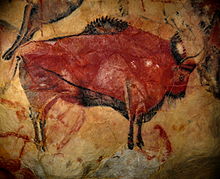
-
Published: 17 January 2023

By |Castle Civilization and Heritage magazine
17- January- 2023
The researchers paid attention to the truth about the rock drawings, which appeared in prehistoric monuments
In the following report, we explain what these drawings are:
In fact, rock drawings are sketches found in some rocks or caves, especially those drawings that date back to prehistoric times.
Most of these drawings give us indications of human activity written on the walls of caves, huts, rock shelters, and even cliffs or any other rock formations.
In this regard, it is practically impossible to isolate pictorial manifestations from other representations of prehistoric art such as engravings, carvings, and petroglyphs carved into stone by tapping or abrasion.
Being protected from erosion by the geological nature of the cave, the place, or by the location of the rock paintings themselves, the cave paintings have withstood the centuries.
It is one of the earliest recorded manifestations of art, with drawings dating back at least 40,000 years, during the last Ice Age. However, in mid-September 2018, researchers from the University of the Witwatersrand in South Africa found a stone in which Paleolithic drawings were found that exceed those known to date.
The latest estimates are that it was recorded on rocks around 73,000 years ago.
Children are known to have found the most famous cave paintings in the world, in Lascaux, France and Altamira, Spain.
Carbon dating shows that the cave paintings in Lascaux are 20,000 years old, while the cave paintings in Chauvet Cave, in the French part of the Ardèche, are almost twice as old.
On the other hand, although cave painting is basically an expression of some prehistoric human concepts, it can be found in almost all periods of human history and on all continents, with the exception of Antarctica.
It is worth noting that the oldest and most important rock drawings were found in Spain and France, and they are symbolic drawings that correspond to the transitional period from the Paleolithic era to the Neolithic age, as these cave drawings and other aspects associated with them reveal that man, since prehistoric times , had organized a wading system of artistic representations which, in general, are believed to have been related to religious magical practices to enhance hunting opportunities.
Given the temporal and geographical scope of this phenomenon, it is difficult, if not impossible, to suggest generalizations, for example, in some cases we find that the rock paintings are located in deep areas of the cave or in places that are difficult to reach; On the other hand, there are other drawings that are visible and located in clear and open areas, but in general whenever we find that the drawings are located far from the living sites in the cave, the concept of the sanctuary arises, whose latent character confirms its religious meaning, which is the sacred character away from the drawings of daily life. , while in cases where painting appears in ordinary contexts, it is necessary to rethink this idea and consider the complementarity and cooperation between art, religion and the daily life of primitive man.
